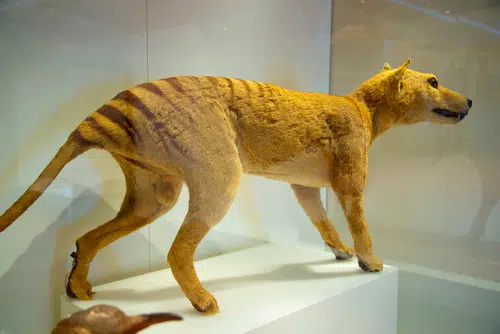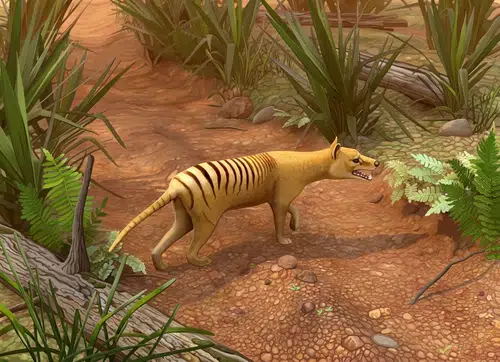Home » Blog » Pet » Pets: Understanding Them » Our Tassie Tiger Could Make a Comeback – Here’s How
Categories
Tags
animal welfare
breed profile
buying a car
buying a pet
Car
car accessories
car care
car features
car insurance
Car safety
car sales
car service
cat
cat behaviour
cat body language
Cat Breeds
cat food
cat insurance
comprehensive car insurance
Dog
Dog Behaviour
dog body language
Dog Breeds
dog food
Dog Insurance
dog training
eco friendly cars
Kitten
New Car
pet accessories
pet activities
Pet Adoption
pet breeders
pet days of the year
pet fun stuff
Pet Health
pet insurance
pet parenting
Pet Safety
pet services
Puppy
rescue pets
road safety
road trip
safe driving
Recent Blog:
Facebook Posts
2 days ago
Growing old sometimes means we can’t take care of pets anymore. Find out some advice on what to do when this happens:![]()
![]() Senior Pet Parents – Contingency Plans for Your Pet – bit.ly/44bzwkS
... See MoreSee Less
Senior Pet Parents – Contingency Plans for Your Pet – bit.ly/44bzwkS
... See MoreSee Less
Senior Pet Parents' Contingency Plans for Pets
www.pd.com.au
Sometimes senior pet parents need more downtime. For older pet owners, this can be tricky to navigate if their dog or cat is full of beans and wants to4 days ago
Before you rev up the engine, let’s run through a checklist of things to do before starting your car. Not only do these steps ensure your safety (and that of others around you), but they also help in maintaining your vehicle's longevity.![]()
![]() Driving Tips: Your Checklist Before Starting Your Car -
... See MoreSee Less
Driving Tips: Your Checklist Before Starting Your Car -
... See MoreSee Less
Driving Tips: Your Checklist Before Starting Your Car
www.pd.com.au
Heading out for a drive? Hold up a second! Whether you're dashing off to work, running errands, or embarking on a road trip adventure, there are a few1 week ago
Are intestinal worms setting up camp in your dog’s gut without paying rent? Here’s how to spot the main culprits and get rid of them too:![]()
![]() Preventing, Identifying and Treating Intestinal Worms in Dogs - bit.ly/43YjCKu
... See MoreSee Less
Preventing, Identifying and Treating Intestinal Worms in Dogs - bit.ly/43YjCKu
... See MoreSee Less
Preventing, Identifying and Treating Intestinal Worms in Dogs
www.pd.com.au
Intestinal worms, such as roundworms in dogs are one of the least glamorous topics on the planet. These intestinal parasites that basically use our dogsThe final time a Tasmanian Tiger sighting was recorded in the wild was in 1933. Three years later the last of its kind in captivity, named Benjamin, died a lonesome death in the Hobart Zoo. Now plans are underfoot to bring back this thylacine and reintroduce it to Tassie. But this is no small feat.
Bringing back an extinct species is as far a cry as you can get from bringing a band back by chanting “we want more”. It’s far more science-y than most of us can imagine. And even if we do succeed in recreating this Aussie vestige, what’s stopping it from going extinct again?
Find out more.

Sequencing the Tasmanian Tiger genome
A team of geneticists from the University of Melbourne is working with Colossal Biosciences on the de-extinction project. BTW, Colossal Biosciences is also behind the de-extinction project for the Woolly Mammoth that’s underway but nowhere near successful yet.
The Thylacine Integrated Genetic Restoration Research (TIGRR) Lab hopes to bring the Tasmanian Tiger back in the next 10 years.
In 2017 they managed to sequence the Tasmanian Tiger’s genes and today they’re looking at editing the cells to create a baby thylacine. They’re using technologies like CRISPR gene editing, test tube reproduction and IVF.
It won’t be identical to the original because not 100% of the original genes can be recreated. It would be more of a moggie, or perhaps a mutt (or muttie)?
Tasmanian Tiger sightings – some say it still exists
Never mind bringing it back, some enthusiasts say the Tasmanian Tiger never left. Tasmanian Tiger sightings are nothing new, but so far there’s been no proof to back it up.
Real or not, they make for a good story. Check out this thylacine enthusiast, or “privateer” who’s president of the thylacine awareness group:
World Extinction Day
Animals are often named after the place they were discovered or by the person that first documented them. But the Tasmanian Tiger is different because it’s named after the last place it was seen alive.
The death of the last known Tassie Tiger on 7 September 1936 marks World Extinction Day.
It used to live in Australia and New Guinea but was hunted to extinction. A government bounty meant every kill was worth £1 (roughly $120 in today’s money). Yet today we’re trying to bring back the thylacine.
Perhaps there’s a lesson to be learned? Insight and foresight are important for successful evolution. For example, how can we curb the climate crisis and prevent further extinction? Read how cars contribute to global warming and why we should all walk more for a start.
Award winning pet insurance
Pet insurance is a great example of planning for the future. You put a few dollars toward your pet’s plan each month even and especially when they don’t need it. But when they do, you’ll be able to take quick action with their medical care thanks to your financial foresight.
Get your first month of pet insurance FREE with PD Insurance, when you buy online. Click below to start.
Share On:




